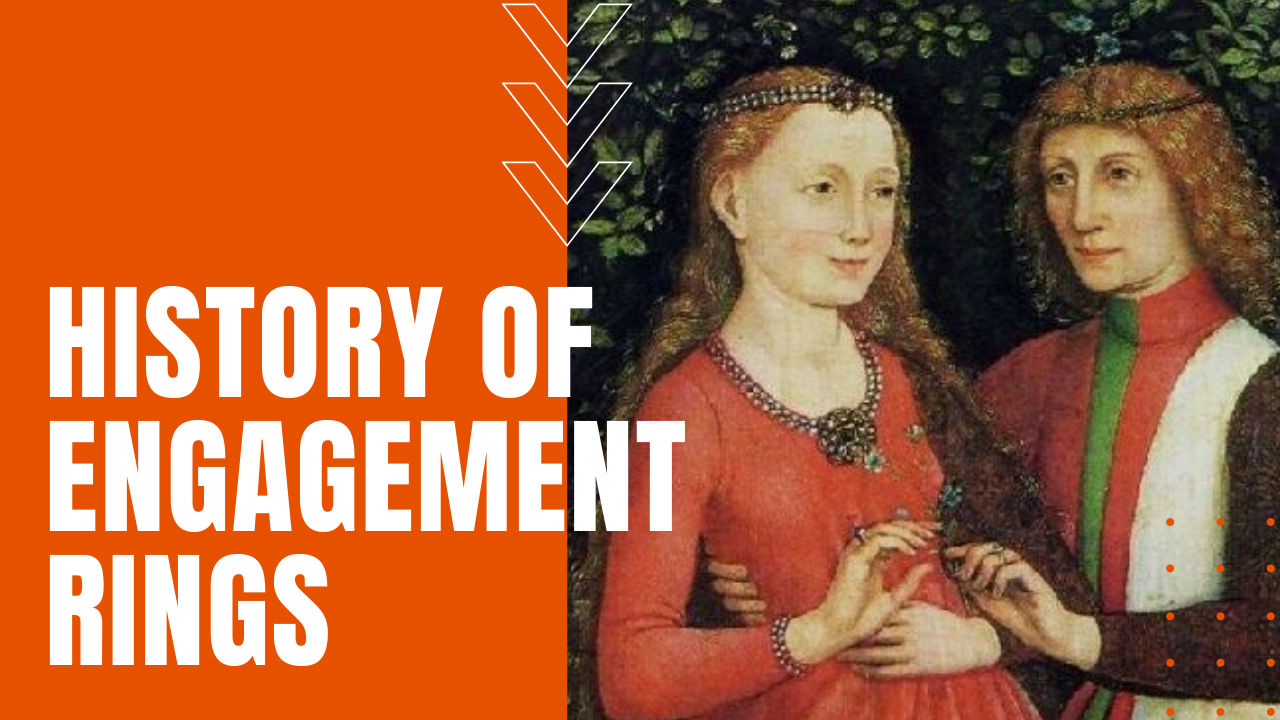History of Engagement Rings

While anthropologists believe that engagement rings originated with the ancient Romans—when wives wore rings attached to small keys, indicating their husbands’ ownership—it wasn’t until 850 A.D. that the engagement ring was given an official meaning when Pope Nicholas the 1st declared the engagement ring as a symbol of a man’s intent to marry a woman.
History of Diamond Engagement Rings
Diamonds entered the mix in 1477 when Archduke Maximillian of Austria commissioned the first diamond ring on record before his upcoming betrothal to Mary of Burgundy.
The Archduke’s gesture sparked a trend in Europe during the Victorian era from 1820 to 1914, when jewelers crafted engagement rings with floral patterns, which became commonly known as “posey rings.”
In 1525 Europe, Gimmel engagement rings became all the rage, after Martin Luther commissioned a two-hoop ring for his engagement to Catherine Bora. Each wore one part of the ring until their marriage that same year, when the bands were joined on Catherine’s finger during their wedding ceremony.
History of Engagement Rings in America
Engagement rings made their way into America in the 1840s but remained relatively uncommon until the first decade of the 20th century when lacy ring designs came into vogue.
When an abundance of diamonds were discovered in the mid-1860s on the South African farm of Nicolaas and Diederick de Beer, diamond engagement rings grew in popularity until the lean years of the Great Depression, prompting the De Beers Company to run advertisements of glamorous movie stars draped in diamond jewelry.
Three years after the start of their ad campaign, sales of diamonds increased by 50 percent. But the real popularity of the diamond engagement ring happened in 1947, when De Beers launched their now classic slogan, “A Diamond is Forever,” affixing in the minds of lovers the world over that a diamond engagement ring is the symbolic reflection of a lifetime commitment between two people, making the engagement ring, one of the most expensive sparklers in the history of modern romance.
